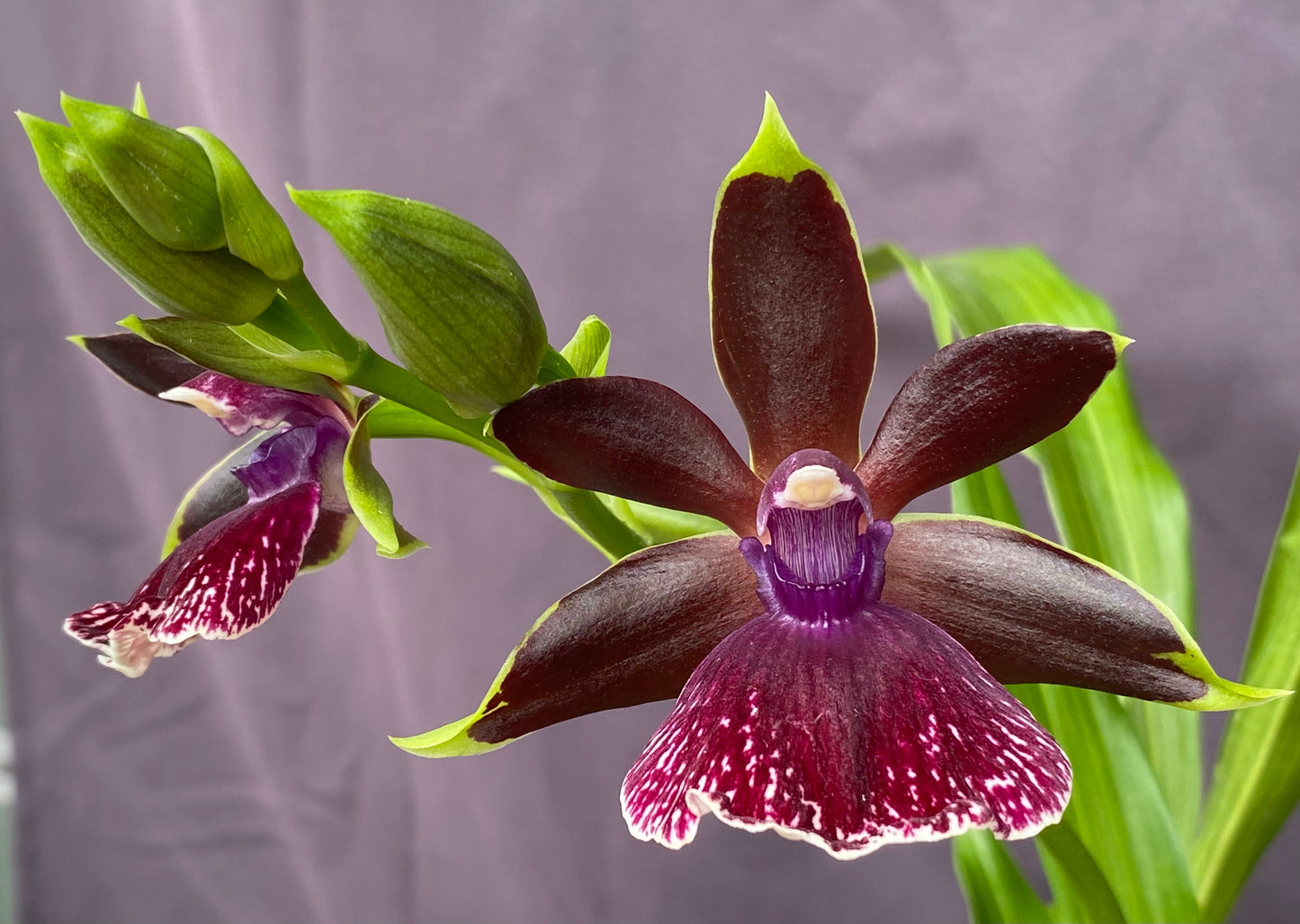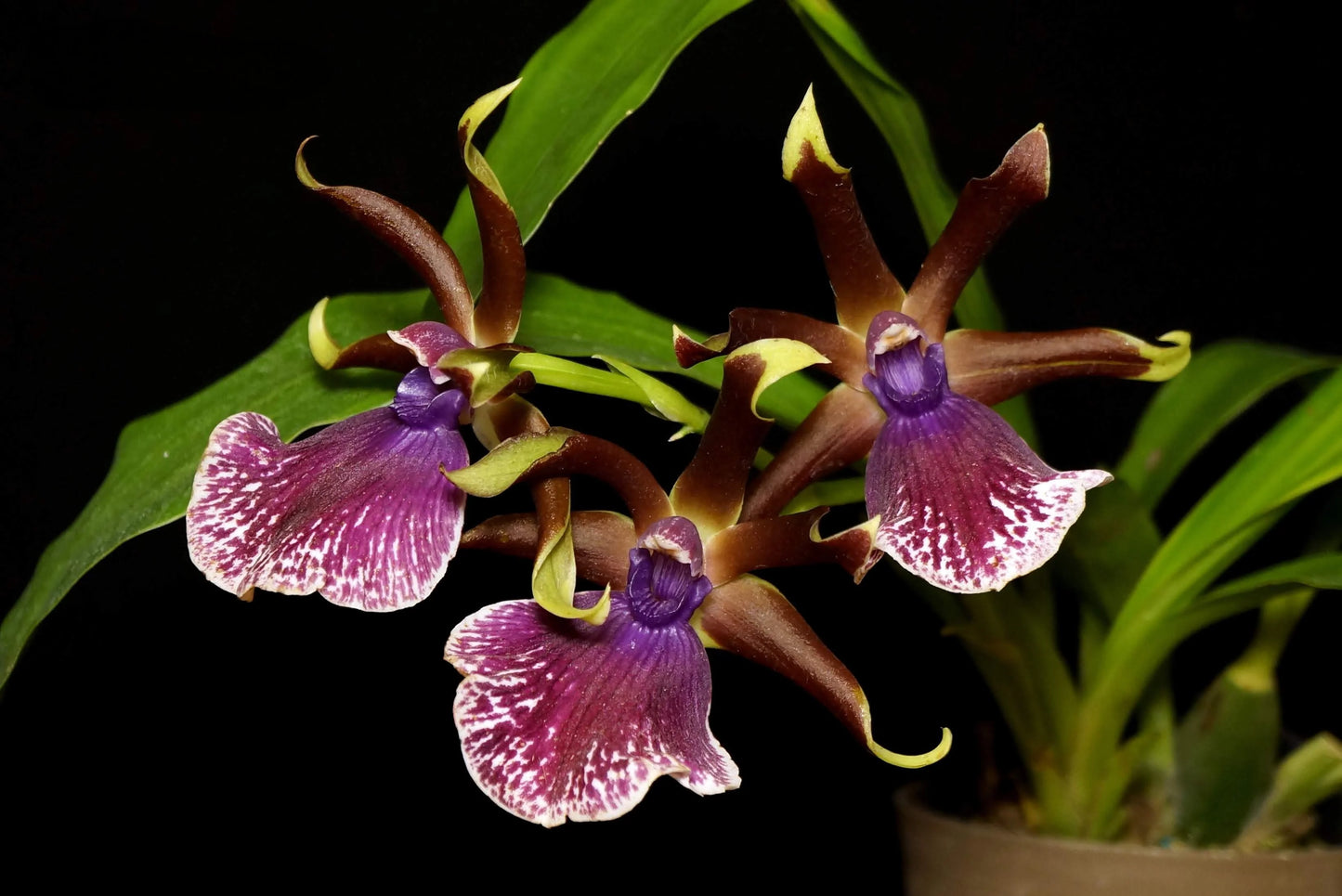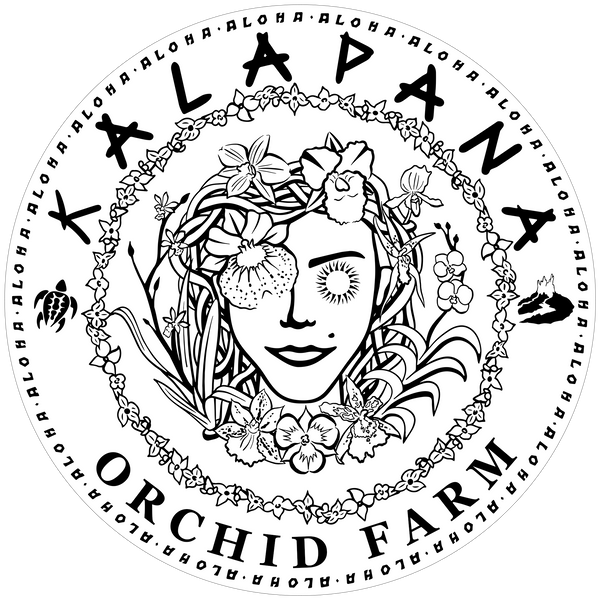Kalapana Orchid Farm
Zglm. Louisendorf 'Rhein Moonlight' x Glta. grandiflora
Zglm. Louisendorf 'Rhein Moonlight' x Glta. grandiflora
Couldn't load pickup availability
Here we have a truly intriguing hybrid, a cross between Zygopetalum Louisendorf 'Rhein Moonlight' and Galeottia grandiflora. This pairing brings together two distinct lineages, resulting in a plant with remarkable characteristics.
Let's unpack the parentage first. Zygopetalum Louisendorf 'Rhein Moonlight' is itself a hybrid, a captivating union of Zygosepalum labiosum and Zygopetalum Artur Elle. To go a step further, Zygopetalum Artur Elle traces its origins to Zygopetalum mackayi and Zygopetalum Blackii. So, on one side, we have a complex lineage rooted in the Zygopetalum and Zygosepalum genera, known for their often fragrant and richly colored flowers. Zygosepalum labiosum, a parent of 'Rhein Moonlight', is found in the wet tropical biome of northern South America, often in low to moderate elevations. The Zygopetalum species involved in 'Rhein Moonlight' generally hail from South America, with species like Zygopetalum mackayi originating from southeastern Brazil, growing as epiphytes or terrestrials at elevations up to 5,000 ft.
Then we have Galeottia grandiflora, a species that adds its own unique genetic flair. This lovely orchid is native to a broad range spanning from southwestern Mexico through Belize, Guatemala, Costa Rica, and Colombia. It's typically found as an epiphyte in open, lowland rainforests at elevations from 300 to 3,600 ft., thriving in a hot to cool growing environment.
Now, for the progeny of this intriguing cross! Expect a robust plant with a terrestrial or semi-epiphytic growth habit, forming substantial pseudobulbs that are ovoid to pyriform, measuring 1.5 to 3 inches tall, subtended by several scarious (dry, membranous) sheaths when young. The leaves are strap-like, deep green, and often glossy, emerging from the apex of the pseudobulbs, reaching lengths of 12 to 24 inches with a width of 1 to 2 inches. The overall plant height can range from 12 to 18 inches.
The flowers are truly where this hybrid shines. Imagine an exquisite blend of the deep, rich purples and greens often seen in Zygopetalum with the impressive size and distinct patterns of Galeottia. The inflorescence will emerge from the base of the newest pseudobulb, typically an erect spike, holding several waxy, long-lasting blooms. Flower size can easily reach 3 to 4 inches across. The sepals and petals will likely display a fascinating interplay of colors – perhaps a base of olive green or chartreuse, heavily marked and veined with deep maroon, chocolate brown, or velvety purple. The lip, a focal point, will be prominent and often broad, possibly with a crisp white or cream background heavily striated and blotched with a vibrant fuchsia, royal purple, or a rich reddish-brown. Some peloric tendencies may even show through from the 'Rhein Moonlight' lineage, adding unexpected splashes of color or interesting petal forms. This combination often leads to a light, pleasant fragrance, sometimes described as spicy, reminiscent of hyacinths with a peppery note. Blooming season can be quite variable but often occurs from late winter into spring or even fall.
Care Instructions:
Light: Provide bright, indirect light. A good indicator is if the leaves are a medium green, not too dark (too little light) or too yellow (too much light). Avoid direct, harsh midday sun, especially in warmer climates.
Water: Keep the potting medium consistently moist but never soggy. Allow the top inch or two of the medium to approach dryness before watering thoroughly again. Increase watering frequency during active growth periods and slightly reduce it during cooler, less active periods. Rainwater or demineralized water is preferred.
Temperature: This hybrid will generally prefer intermediate conditions. Daytime temperatures should range from 70 to 85°F, with a night temperature drop to 55 to 65°F. This diurnal temperature swing is beneficial for flowering.
Humidity: Aim for relative humidity levels between 60% and 80%. If your environment is drier, consider using a humidity tray or a room humidifier. Good air circulation is crucial to prevent fungal issues.
Potting Medium: A well-draining, slightly acidic mix is ideal. A blend of fine to medium fir bark, perlite, and a small amount of sphagnum moss or charcoal works well. Repot when new root growth is emerging, typically every 1 to 2 years, or when the potting medium begins to break down.
Fertilizer: Fertilize regularly during active growth with a balanced orchid fertilizer at half to quarter strength, every other watering. Reduce or cease fertilizing during periods of less active growth or dormancy. Flush the pot with plain water monthly to prevent mineral buildup.
Grown in 4" pots. Available in limited supply.
*Last two flower images are from the parent plants.
Share












